When it comes to navigating the complex world of drug marketing, ensuring that your materials meet regulatory standards is crucial. Whether you're promoting a new medication or reaching out to healthcare professionals, having a solid letter template for approval can streamline the process significantly. This template not only helps in maintaining compliance but also enhances communication with stakeholders. Curious to learn more about how to effectively craft your drug marketing materials? Read on!
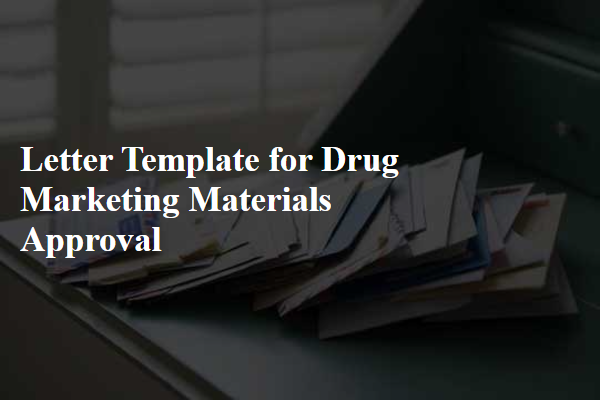
Compliance with regulatory guidelines
Marketing materials for pharmaceutical products must strictly adhere to regulatory guidelines established by authorities like the FDA (Food and Drug Administration) in the United States. These guidelines ensure that drug advertisements are truthful, not misleading, and provide a balanced view of the benefits and risks associated with the medication. Each promotional piece must include essential information such as the drug's approved indications, contraindications, and common side effects. Additionally, advertisements should maintain a standard of scientific accuracy, presenting data from clinical trials with appropriate citations from reputable journals. Compliance assessment should involve a thorough review process by legal and regulatory teams to identify potential violations before distribution. Regular audits of marketing materials can help maintain adherence to evolving regulations, ensuring that the promotion of products like antihypertensives and antibiotics aligns with ethical standards within the pharmaceutical industry.
Clarity and accuracy of information
Effective drug marketing materials require clarity and accuracy in the presentation of information, such as scientific data, dosage recommendations, and safety warnings. Accurate dosage information should adhere to established guidelines from health authorities like the FDA (Food and Drug Administration), outlining specific milligrams or milliliters. Clear labeling of potential side effects, with statistics indicating occurrence rates (for example, 1 in 10 patients experiencing nausea), enhances understanding. Clinical trial results must be referenced, including names of trials, publication dates, and participant numbers (such as 500 patients in a Phase III study), to support claims. Inclusion of the drug's mechanism of action fosters clarity, explaining how it targets specific biological pathways. Additionally, compliance with regulatory standards, such as the guidelines from the AMA (American Medical Association), ensures that all materials are trustworthy and effective in conveying essential information about the drug's use.
Brand consistency and messaging
Strategic marketing materials for pharmaceutical products emphasize brand consistency and coherent messaging to enhance recognition and trust among healthcare professionals and consumers. Effective branding integrates specific design elements, such as logos, color schemes, and typography that align with regulatory standards set forth by agencies like the Food and Drug Administration (FDA). Consistent messaging should incorporate clear descriptions of drug indications, benefits, and potential side effects, ensuring the information remains accurate and compliant with guidelines. Targeted events, such as medical conferences (like the American College of Cardiology Conference) and distribution channels (including healthcare providers and pharmacies), are crucial for maximum reach and impact. All materials must undergo rigorous review processes to align with internal branding strategies and external regulatory requirements. This focus on systematic brand integrity fosters lasting relationships within the healthcare community.
Inclusion of necessary disclaimers
In drug marketing materials, the inclusion of necessary disclaimers is crucial for compliance with regulatory standards set by agencies such as the Food and Drug Administration (FDA) in the United States. Disclaimers must clearly outline potential side effects or adverse reactions associated with the drug, typically indicated by percentages reflecting clinical trial experiences or post-marketing surveillance data. Additionally, disclaimers should clarify the intended use of the drug, contraindications, and any specific demographic considerations, ensuring audiences, including healthcare professionals and patients alike, receive accurate information. When advertising, placement of disclaimers should follow the guidelines established for print and digital formats, ensuring visibility and prominence to meet legal requirements while maintaining ethical marketing practices.
Audience relevance and appropriateness
Approval of drug marketing materials necessitates careful evaluation of their audience relevance and appropriateness. Target demographics, identified during pre-launch market research, should align with the intended therapeutic areas of the pharmaceutical product. Key population segments, such as healthcare professionals or patients suffering from specific conditions, must receive clear and accurate information tailored to their needs and understanding levels. Content must adhere to regulatory guidelines from agencies like the FDA, ensuring truthful claims about drug efficacy and safety. Visual elements, including imagery and language used, should resonate with the audience, avoiding technical jargon that may confuse patients. Consideration of cultural sensitivities and health literacy levels enhances engagement and fosters trust in the product, promoting informed decision-making. Overall, a strategic approach focused on audience relevance and appropriateness can drive successful communication and ultimately support better healthcare outcomes.
Letter Template For Drug Marketing Materials Approval Samples
Letter template of marketing authorization application for drug materials
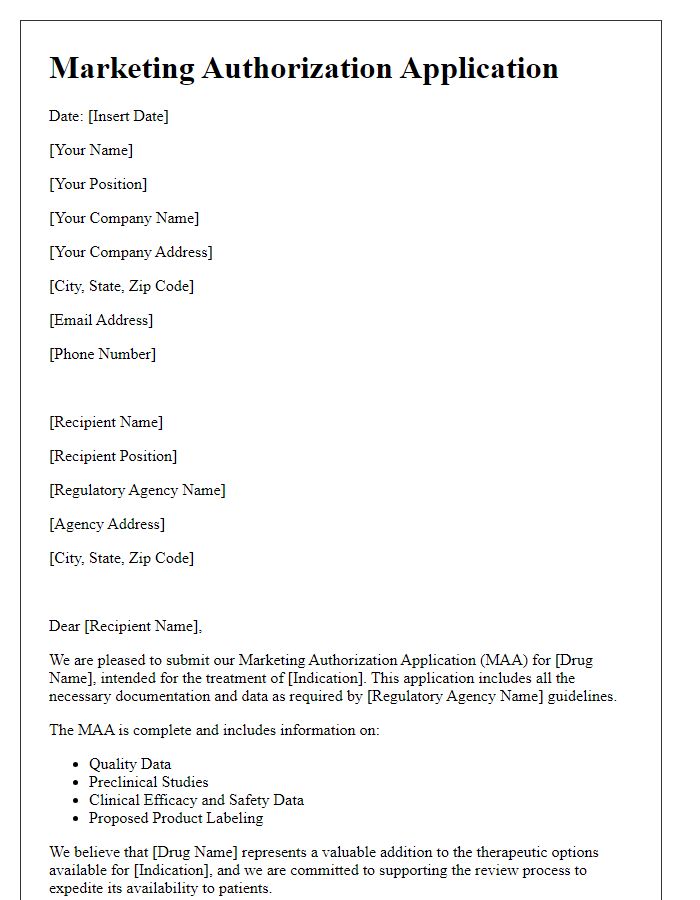

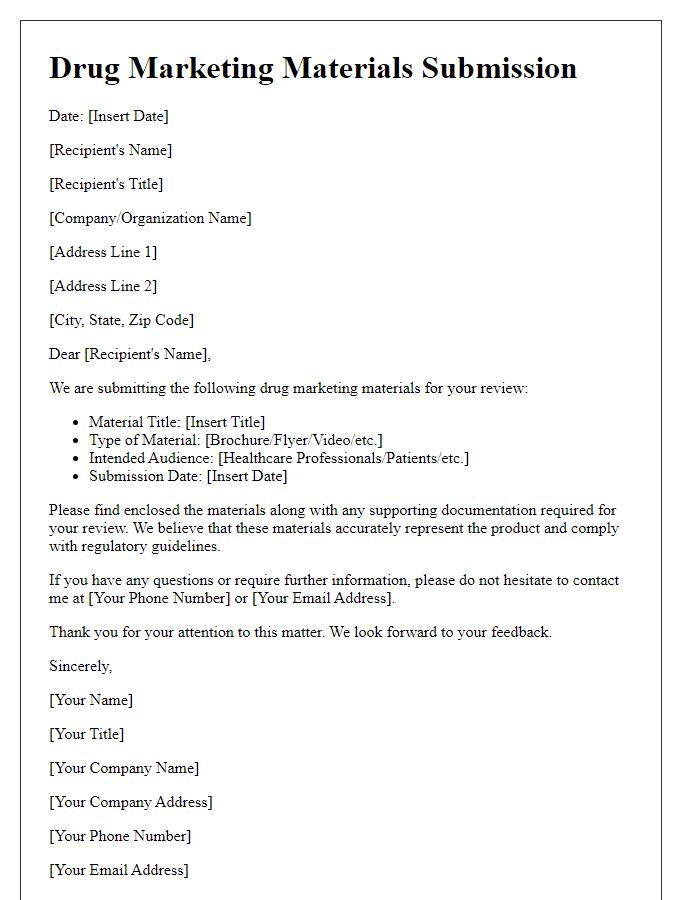
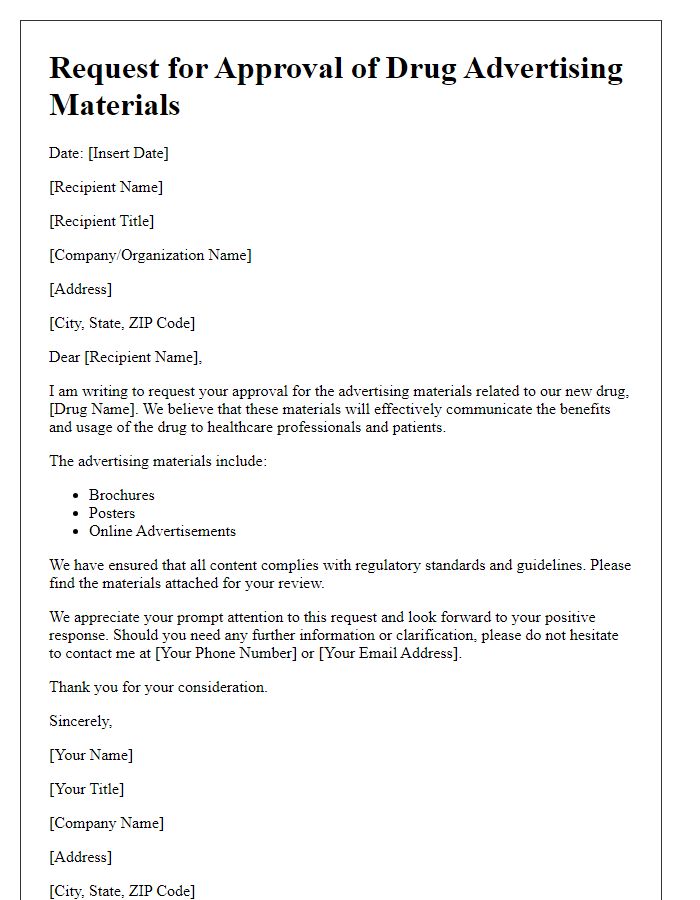
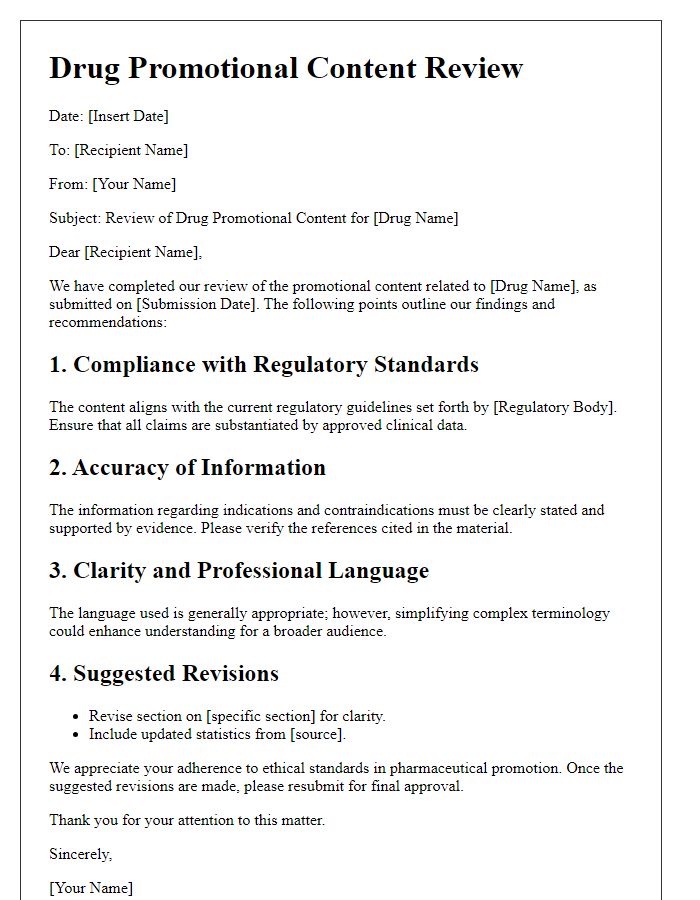
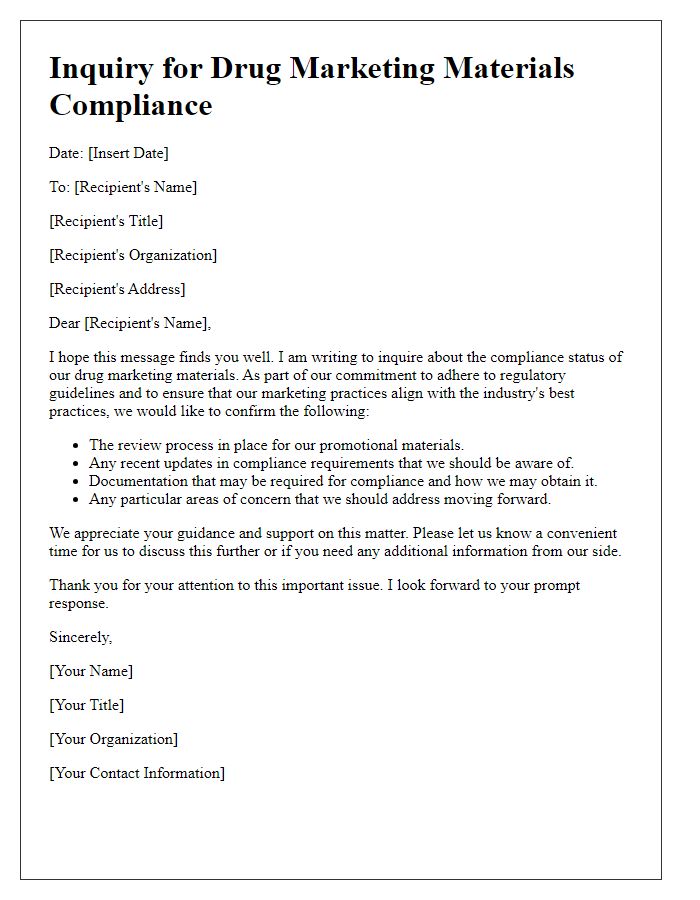

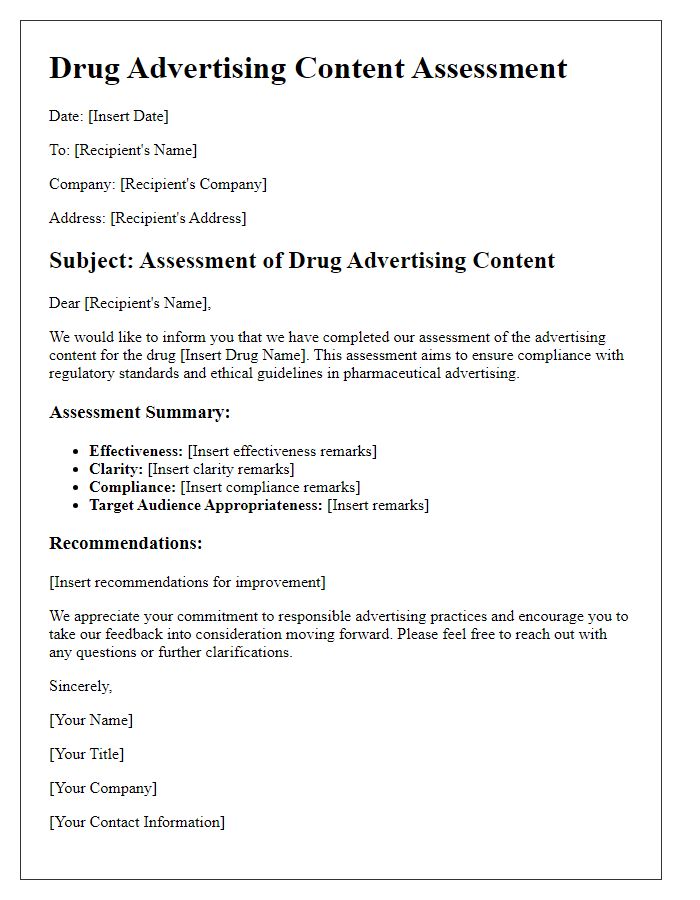
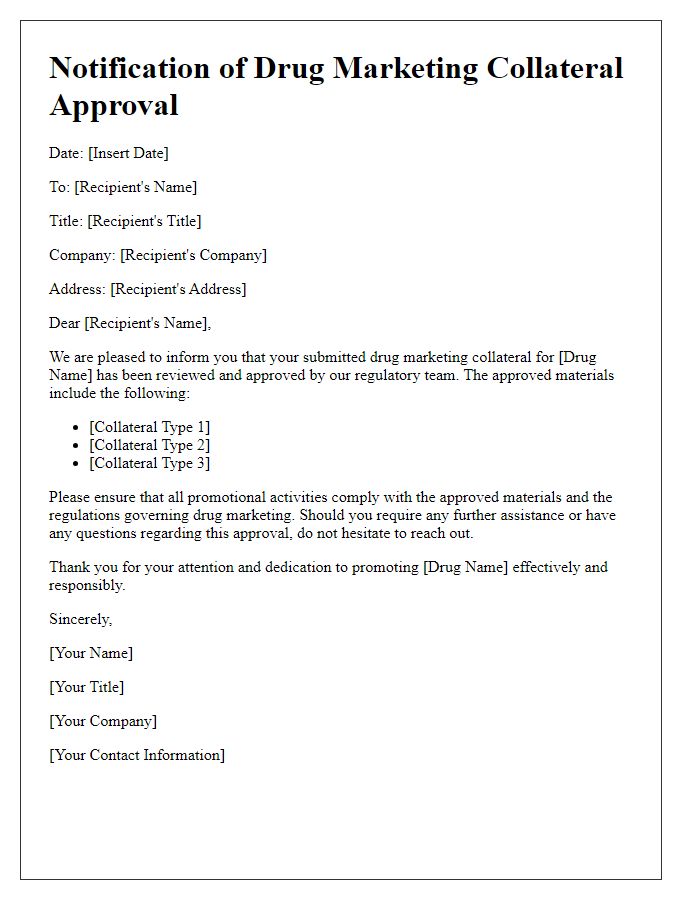
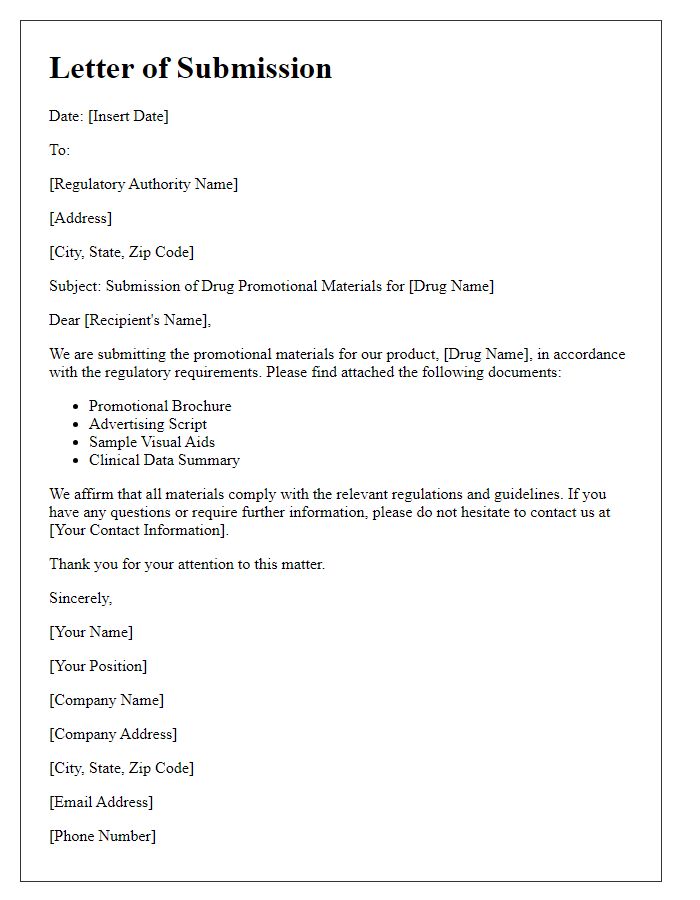



Comments